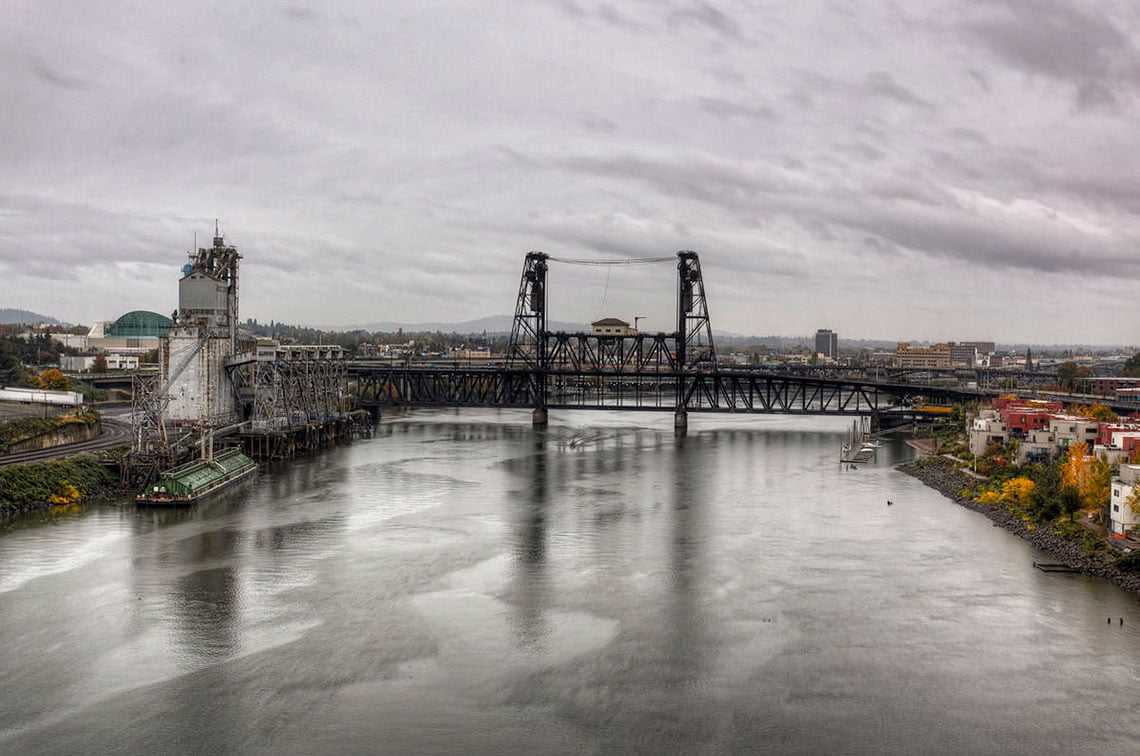
Bridge Stats
- Mile: 12.1
- Opened: (Trains) July 12, 1912, (Other) August 9, 1912; 1888
- Type: Telescoping double-deck vertical lift Pratt truss
- Engineers/Designers: Waddell & Harrington (MO)
- Owner: Union Pacific Railroad Company
- Total Length: 1,624’
- Main strong Length: 211’ 2”
- GPS Coordinates: 45.527492, -122.669144
ABOUT THE STEEL
The Steel Bridge is the only double-deck vertical lift bridge of its type in the world (The Portland Bridge Book). Five counterweights in each of the massive towers lift both central spans independently: the lower deck retracts (telescopes) 45 feet up into the upper deck (in only 10 seconds); both decks rise together when additional clearance is required. The lower deck is only 26 feet above low water level—the lowest of the downtown bridges—so it is lifted often, especially in summer. Most river traffic clears without needing to raise both decks. The total moving load of that second lift is nearly 9 million pounds and moves only one foot per second.
The lower deck was built for passenger and freight trains, the upper deck for pedestrians, gas- and horse-powered vehicles and the city’s first electric trolley. Although those trolley rails were later removed, in 1986 rails for the MAX line to Gresham were installed. In 2001 Portland cantilevered a pedestrian/bike sidewalk onto the outside south face of the lower deck, thus completing a non-vehicular loop around a downtown stretch of the Willamette River.
Designed and engineered by Waddell & Harrington (Kansas City, MO), this innovative structure was completed in 1912. It kept the acquired name of the 1888 swingspan bridge it replaced, a structure which had been built of steel at a time when wrought iron was the common bridge material.
LIGHTING DESIGN PLANS
Thanks to a grant from OSRAM/Sylvania, WLB arranged for Jim Benya, a lighting designer with over 30 years experience, to create the lighting design for the Steel Bridge. Elements of Benya’s design include floodlighting from within the massive counterweight towers so they glow as if they were towers of light, washing white light on the trusses to emphasize the distinctive telescoping deck layers, and setting searchlights atop the angling towers so they cross 1000′ in the sky on special occasions.
Benya is acclaimed as one of the nation’s leading experts in the field and serves on the board of the National Dark Sky Assn. Shortly after relocating his firm, Benya Lighting Designs, from San Francisco to West Linn, he also agreed to lead WLB’s Legacy Project technical advisory team.


